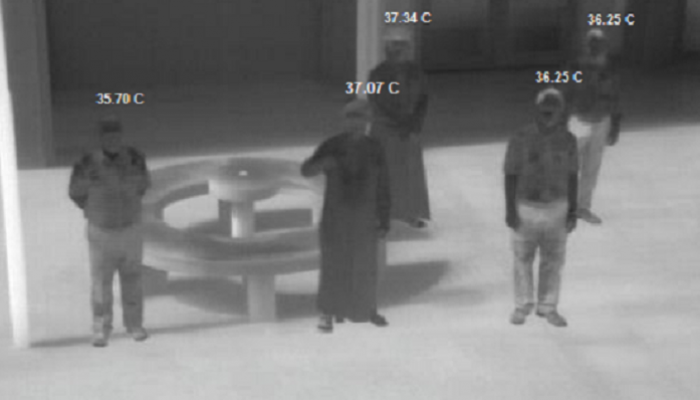
Muscat: A fully functional prototype which can detect COVID-19 symptoms from a distance of 10 to 15 metres has been built by researchers in Oman.
The research team was led by Dr. Ahmed Al Maashri from Sultan Qaboos University and has been funded by the COVID-19 Research Programme offered by the Ministry of Higher Education, Research and Innovation (MoHERI).
The prototype uses thermography to accurately calculate the skin temperature of targets using thermal cameras. In addition, machine vision algorithms are used to perform tasks, such as action recognition to detect other symptoms, such as coughing and sneezing.
Machine vision algorithms will also help in detecting the faces of suspected cases. This project aims to develop a drone-based system that can detect suspected cases of COVID-19 infections from a distance, using drones and the artificial intelligence (AI) technology. The system was tested in outdoor environments at various altitudes, multiple angles of incidence, different times of the day, and several locations.
The ability to detect suspected cases of infection from a distance has several advantages. First of all, this approach is safer since suspected areas can be scanned without the need to send health care providers to the location to take measurements. Secondly, it is much faster to scan areas using a drone instead of making door-to-door visits to these locations.
Thirdly, the proposed system is much more cost-effective, especially when compared with dispatching skilled cadre who could have otherwise been utilised to provide health care to those in need. The system provides accurate skin temperatures of multiple individuals simultaneously.
The low error margin was achieved by developing an automatic self-calibration mechanism for the thermal information captured by the thermal camera. This relieves the operator from the laborious and mundane effort of calibrating the IR thermal camera.
Also, the system can reliably detect the faces of targets, even when they are wearing masks. The advantages of the system include that it can recognize individuals who are coughing, sneezing, or nose-blowing with very high accuracy and in real-time.
Furthermore, the system provide reports that include the face of the suspected cases along with the exact locations (identified by GPS coordinates). These reports can be used by the authority to stop the spread of the infection.
In order to validate the performance of the system, two datasets were compiled for this project. One dataset is used for skin temperature measurement, while the other is for human action recognition. These two datasets can be very helpful in other similar projects and applications.
In addition to Dr. Ahmed Al Maashri, the research team also includes Prof. Hadj Bourdoucen and Dr. Ashraf Saleem from the Department of Electrical and Computer Engineering at the Faculty of Engineering at SQU.